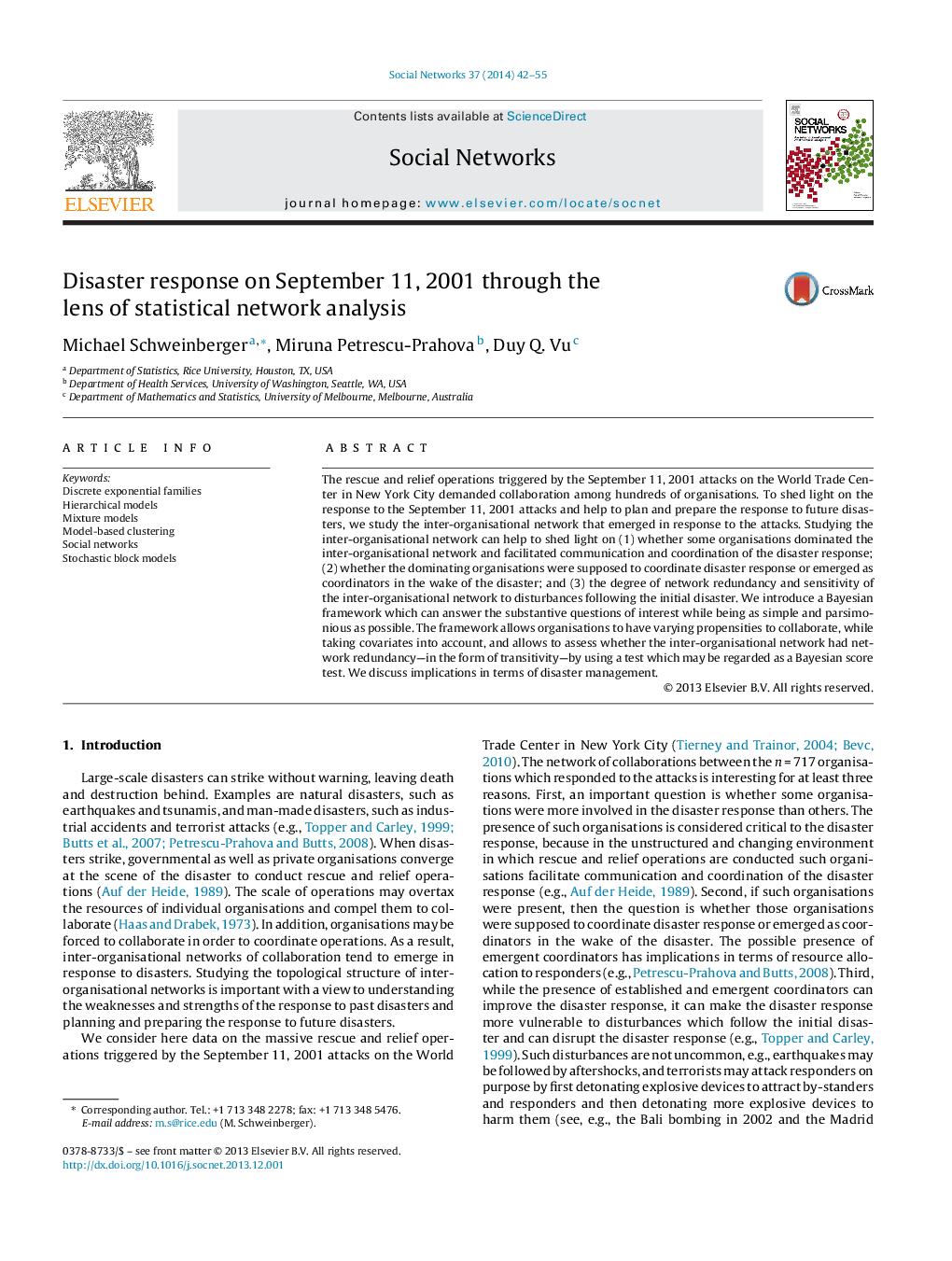| کد مقاله | کد نشریه | سال انتشار | مقاله انگلیسی | نسخه تمام متن |
|---|---|---|---|---|
| 1129240 | 1488862 | 2014 | 14 صفحه PDF | دانلود رایگان |
• Network of collaborations between 717 organisations responding to September 11, 2001.
• Model tailored to collaboration network, modelling degrees, covariates, transitivity.
• Bayesian score test of transitivity.
• Bayesian model estimation and model selection.
• Empirical results: model-based clustering; network redundancy and vulnerability.
The rescue and relief operations triggered by the September 11, 2001 attacks on the World Trade Center in New York City demanded collaboration among hundreds of organisations. To shed light on the response to the September 11, 2001 attacks and help to plan and prepare the response to future disasters, we study the inter-organisational network that emerged in response to the attacks. Studying the inter-organisational network can help to shed light on (1) whether some organisations dominated the inter-organisational network and facilitated communication and coordination of the disaster response; (2) whether the dominating organisations were supposed to coordinate disaster response or emerged as coordinators in the wake of the disaster; and (3) the degree of network redundancy and sensitivity of the inter-organisational network to disturbances following the initial disaster. We introduce a Bayesian framework which can answer the substantive questions of interest while being as simple and parsimonious as possible. The framework allows organisations to have varying propensities to collaborate, while taking covariates into account, and allows to assess whether the inter-organisational network had network redundancy—in the form of transitivity—by using a test which may be regarded as a Bayesian score test. We discuss implications in terms of disaster management.
Journal: Social Networks - Volume 37, May 2014, Pages 42–55
